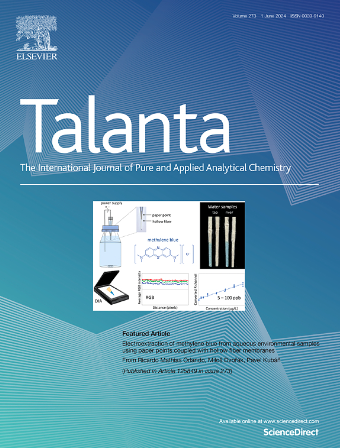Integrated duplex reverse transcription-recombinase aided amplification (RT-RAA) and lateral flow assay (LFA) for rapid simultaneous detection of Zika virus and Japanese encephalitis virus in single reaction format
IF 5.6
1区 化学
Q1 CHEMISTRY, ANALYTICAL
引用次数: 0
Abstract
Zika virus (ZIKV) and Japanese encephalitis virus (JEV), two consequential mosquito-borne flaviviruses, induce severe systemic and neurotropic-encephalitic pathologies with overlapping symptoms profiles, complicating differential diagnosis in co-endemic regions. To address this critical challenge, we developed a dual reverse-transcription recombinase-aided amplification (RT-RAA) coupled with duplex lateral flow assay (LFA) platform for rapid, equipment-free co-detection of ZIKV and JEV in a single reaction tube. The assay achieved isothermal amplification at 39 °C within 40 min using a field-deployable incubator. The limit of detection (LOD) reached as low as 8.5 copies ZIKV RNA, and 1.1 copies JEV RNA in single pathogen detection, while 110 copies JEV RNA in co-detection mode. This technological advance bridges the critical sensitivity gap between lab-based PCR and conventional rapid tests, enabling first-line healthcare responders to conduct precision diagnostics in non-laboratory settings from rural clinics to mobile outbreak response units.

单反应模式下集成双工逆转录重组酶辅助扩增(RT-RAA)和横向流动测定(LFA)快速同时检测寨卡病毒和日本脑炎病毒
寨卡病毒(Zika virus, ZIKV)和日本脑炎病毒(Japanese encephalitis virus, JEV)是两种相应的蚊媒黄病毒,可诱发具有重叠症状的严重全身性和神经热带性脑病,使共流行地区的鉴别诊断复杂化。为了解决这一关键挑战,我们开发了一种双逆转录重组酶辅助扩增(RT-RAA)结合双侧流分析(LFA)平台,用于在单个反应管中快速、无设备地共同检测寨卡病毒和乙脑病毒。使用现场可部署的培养箱,在39°C下40分钟内实现等温扩增。单一病原体检测的检出限(LOD)低至8.5拷贝ZIKV RNA, 1.1拷贝JEV RNA,而共同检测模式的检出限为110拷贝JEV RNA。这一技术进步弥合了实验室PCR与传统快速检测之间的关键灵敏度差距,使一线卫生保健反应人员能够在从农村诊所到流动疫情应对单位的非实验室环境中进行精确诊断。
本文章由计算机程序翻译,如有差异,请以英文原文为准。
求助全文
约1分钟内获得全文
求助全文
来源期刊

Talanta
化学-分析化学
CiteScore
12.30
自引率
4.90%
发文量
861
审稿时长
29 days
期刊介绍:
Talanta provides a forum for the publication of original research papers, short communications, and critical reviews in all branches of pure and applied analytical chemistry. Papers are evaluated based on established guidelines, including the fundamental nature of the study, scientific novelty, substantial improvement or advantage over existing technology or methods, and demonstrated analytical applicability. Original research papers on fundamental studies, and on novel sensor and instrumentation developments, are encouraged. Novel or improved applications in areas such as clinical and biological chemistry, environmental analysis, geochemistry, materials science and engineering, and analytical platforms for omics development are welcome.
Analytical performance of methods should be determined, including interference and matrix effects, and methods should be validated by comparison with a standard method, or analysis of a certified reference material. Simple spiking recoveries may not be sufficient. The developed method should especially comprise information on selectivity, sensitivity, detection limits, accuracy, and reliability. However, applying official validation or robustness studies to a routine method or technique does not necessarily constitute novelty. Proper statistical treatment of the data should be provided. Relevant literature should be cited, including related publications by the authors, and authors should discuss how their proposed methodology compares with previously reported methods.
 求助内容:
求助内容: 应助结果提醒方式:
应助结果提醒方式:


